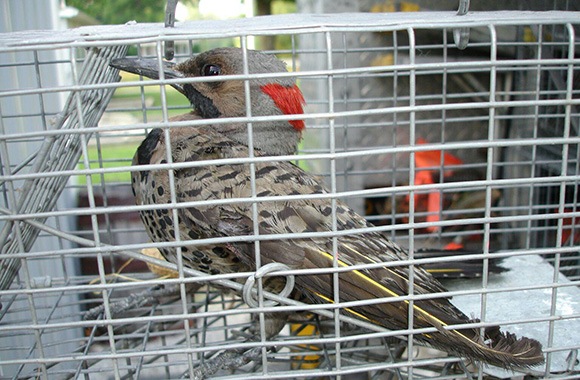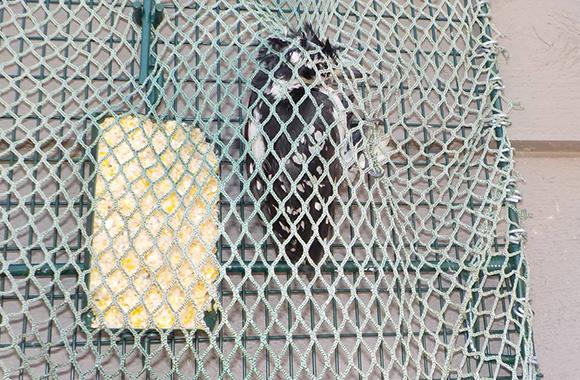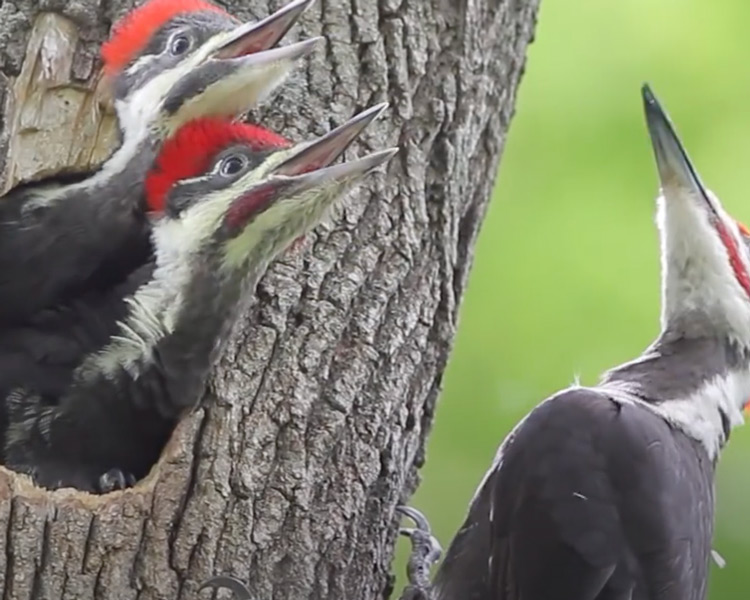How to keep woodpeckers away from house
Woodpeckers can become a source of great disturbance in your life so it is important that proper treatment should be given to them. Their presence can never be beneficial and the sooner you will realize it the better it will be. The best way for saving your property from the damage, which woodpeckers can inflict is to start taking steps for damage control as soon as you hear the initial tap or notice the first damage. It is not only about driving woodpeckers away in fact, it’s more related with making your property safe and secure so that these creatures should not return again. This can be done if a proper plan is devised with a lot of care and consideration. Normally woodpeckers will use their sharper bills for making holes in trees and they can also do the same with your house’s building. These birds also are associated with drum and this practice is normally carried for finding mates. In case woodpecker looks at your home as its own territory, then it is strongly capable of inflicting damage. Therefore learning to keep woodpeckers away is something of very high value and this practice should never be ignored.


Deterrents
There are different kinds of repellents that can be used for the purpose of scaring away woodpeckers, but it is best that you should make the selection of a deterrent after carefully considering the demands, which are imposed by your requirements. There are sticky repellents, but we strictly discourage their use as they expose the bird to great pain and stress. Birds get attached to the sticky material and in their desperate attempts to escape fur gets damaged to a greater extent bringing them harm. There are visual deterrents which you can use in this regard as well. Reflective tapes or strips of aluminum foil are good at scaring away woodpeckers. Another similar product comes by the name of wind stock and it hangs from corners of house and acts in a manner similar to aluminum foil and can appear as lesser intrusive.
Plastic owls are also used for scaring woodpeckers, but they are only good enough for few days because after sometime they will be identified and birds will stop paying any heed to them. Another product, which is commonly known as Terror Eyes, is also considered as an effective aid for scaring away the birds and it’s known as an effective alternate to plastic owls.
Sound deterrents are also popularly used and these mostly include electronic distress call systems. Generally call of predators such as Sharp Skinned Hawks is broadcasted by means of speaker systems at different intervals for the purpose of frightening away woodpeckers away from a property.
Preventive measures
It is best that one should take preventive measures beforehand as these are extremely useful.
- The basic concept, which should be present in mind all the time should be to make your property less attractive for woodpecker as this plays a crucial part in damage control in fact no issues will be there to face in the first place because birds will not prefer to come to your area. However, if woodpecker has already penetrated into your house, then it’s time to take some serious actions on this matter.
- For the purpose of preventing damage under the region of eaves it is suggested that you should consider using plastic or nylon netting, which can be attached from overhanging eave to sides of the building that has been damaged. Netting is an effective method and the best part is that it also provides great results.
- For the purpose of covering holes that are present one can also use aluminum flashing. The best aspect is that it will also go well with the aesthetics of your house as it can be painted to give any color.
- Setting suet feeder in yard can also distract birds from your property. It will be better if you will keep the feeder filled with food throughout winter, spring and fall. The opportunities related with natural food are limited and birds are hungry. However, during summers it is better to remove feeder.
- Don’t leave any food open also the garbage cans should be sealed in a proper fashion.
Nesting problem
If the birds have still not established the nest, then suggestion is that holes which have been made should be sealed with wood. However, if there are eggs and young birds then it is best to leave the nest for some time and it should only be removed once the little birds get mature and leave the nest.
You should also search your home for finding any sign of infestations related with insects. If woodpeckers are visiting your property again and again, then chances are high that food is attracting them. You may not be well aware, but ants, bees or termites may have penetrated into your property. Take actions for removing these creatures from your property. Attic and closets should be checked with great care and consideration. If you think that all matters are now out of hands, then take help from professionals because they can provide the best services.

Experts have studied woodpeckers in great detail, working out what deter them and what attracts them. A number of deterrents and repellents on the market promise to send woodpeckers and other birds packing, but they often don’t work as well as they say they do.
No woodpecker repellent or deterrent works one hundred percent of the time. One of the most reliable approaches is to use foil or holographic strips in trees or attached to the side of your house. These streamers deter all birds because of the way they move in the wind, and the foil/holographic material adds an extra layer of repellent — reflecting light and scaring away birds.
Owls and larger birds/birds of prey are predators of woodpeckers. Dummies and decoys have been shown to work on some occasions, but only when they are regularly moved. The more lifelike the dummy or decoy is, the better the results. Combining the sight of an owl with sound can yield better results still.
You can use netting to cover the building, making sure that it is far enough away from the house to actually stop the bird. You will also want to make sure that your home hasn’t fallen pretty to an insect infestation. Woodpeckers often peck for food.

